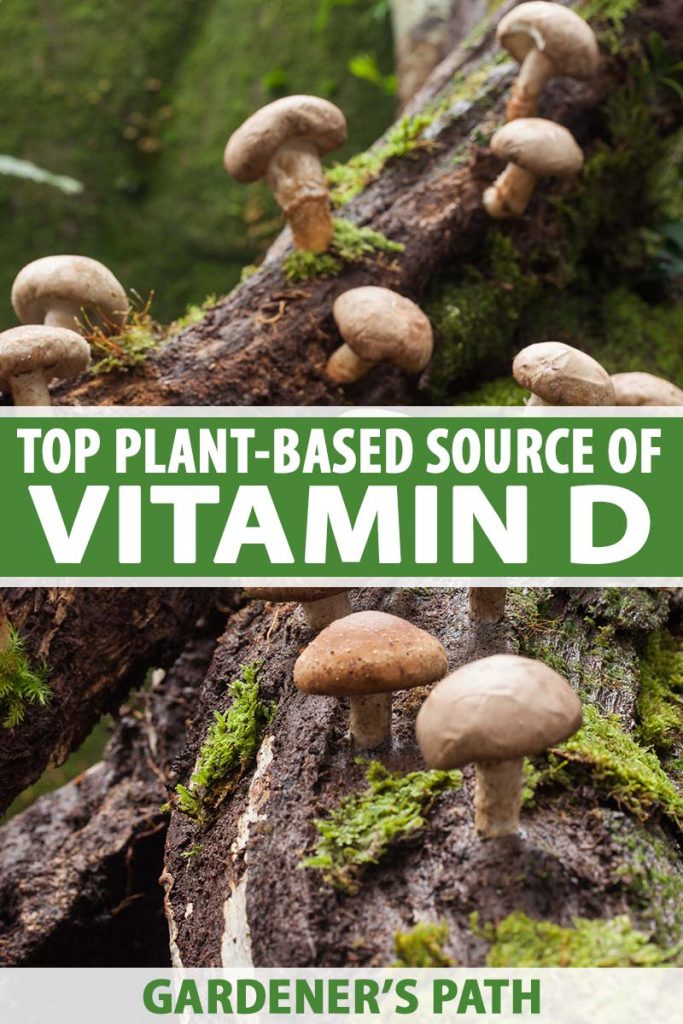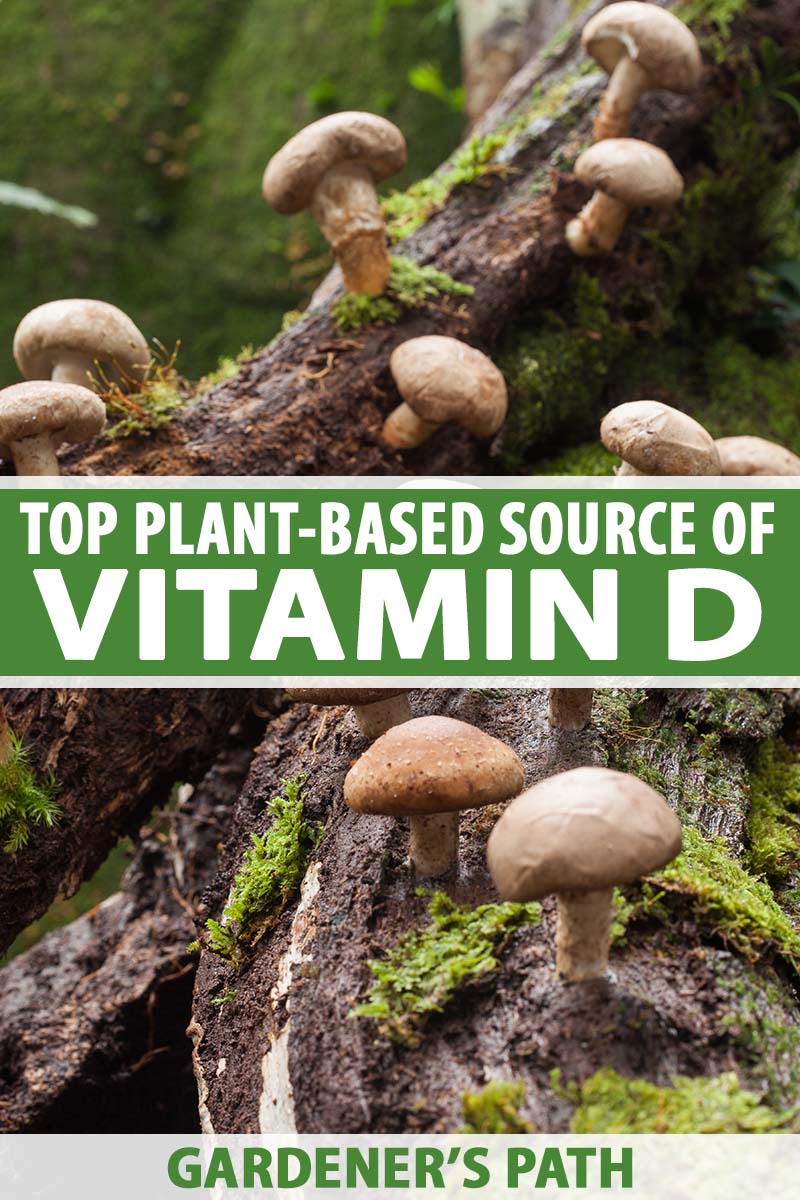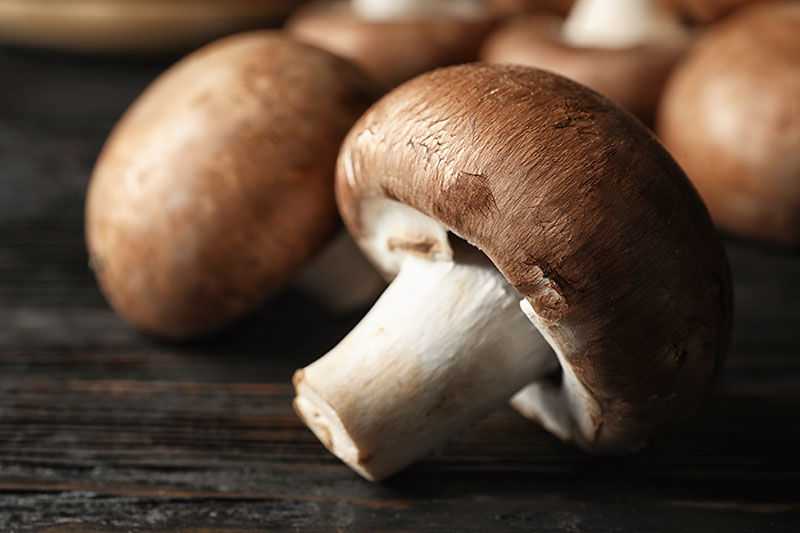This nutrient is sometimes referred to as the sunshine vitamin, because we can actually obtain it from sunlight. Aside from sourcing this essential nutrient via sun exposure, it can be found in several food sources, including a plant-based source you can grow at home. We link to vendors to help you find relevant products. If you buy from one of our links, we may earn a commission. Here is what we will cover:
What Is Vitamin D and How Does It Function?
Vitamin D is one of the fat-soluble vitamins – in the same category as A, E, and K. Also known as calciferol, this nutrient is stored in its inactive form in our fat cells until it’s needed.
When that time comes, it is mobilized from the fat cells, and converted to calcidiol in the liver. Calcidiol is the main form that circulates throughout the body. Parathyroid hormone moves calcidiol to the kidneys where it is converted into calcitriol, the active form that is moved to organs in need. These conversions to its active form allow it to be utilized by the body. The recommended dietary allowance for healthy individuals from one to 70 years of age is 15 micrograms, or 600 IU daily. Once converted to its active form, it plays a role in many important processes. It aids calcium absorption, helping to build and remodel bone. It can reduce inflammation. And additionally, it encourages cell growth and glucose metabolism, allowing the carbohydrates that we eat to be converted into usable energy.
How It Helps Our Bodies
Strong bones are vital, especially as we age. Because of its close relationship with calcium, vitamin D can help to increase bone mineral density. Or in other words, when combined with calcium, this nutrient can help to prevent or limit the extent of damage from osteoporosis. Aside from bone health, its anti-inflammatory properties have led to speculation that it may assist in preventing certain types of cancer. Many studies, such as this randomized, placebo-controlled trial, have shown mixed results, so no definitive dietary advice can be given quite yet. Similarly, due to its known role in glucose metabolism, research has been done regarding vitamin D and the development of type 2 diabetes. Neither observational nor clinical studies have yet been able to prove a connection between the two. This meta-analysis of several studies proved no distinct connection between vitamin D intake via D3 supplementation and diabetes prevention. An additional potential health benefit of maintaining adequate levels of this nutrient is lower blood pressure. Vitamin D is involved in the processes required for raising and lowering blood pressure, and observational studies have shown that higher levels may be associated with a lower risk of cardiovascular disease.
Food Sources
So, where can you get your daily dose of vitamin D to maintain adequate levels of this essential nutrient and reap these potential benefits? The dietary sources that have the highest amounts are fatty fishes, meats, and egg yolks.
Unfortunately this isn’t the best news for vegans, because all of these natural sources are animal-based. But some processed foods are also fortified with vitamin D to help increase dietary intake. Commonly fortified foods include milk and dairy-free milk alternatives (like soy and almond milk), breakfast cereals, and juices. And now, for the moment you’ve been waiting for – what about that coveted plant-based source of vitamin D that you can grow at home? The main source of vitamin D that you can grow is – drumroll please – mushrooms!
Like people, mushrooms synthesize vitamin D when exposed to UV light, both before and after harvest. Mushrooms that have been exposed to UV light can be an abundant source of vitamin D, depending on the type of mushroom and the level of UV exposure. Mushrooms may be exposed to sunlight by growing them outdoors, or by placing them in the sun after they are harvested. Most store-bought mushrooms are grown indoors in the dark, and these can be exposed to sunlight to boost their levels. According to mycologist Paul Stamets, exposing shiitake mushrooms to sunlight for six hours a day, over the course of two days may increase the vitamin D concentration from 2.5 micrograms per 100 grams to a whopping 1150 micrograms per 100 grams. Growing your own mushrooms is a unique and exciting addition to your home harvest, and there are various ways to go about this. Mushroom kits provide a simple way to get started, and they include everything you need to produce a successful crop as a beginner. Indoor kits typically don’t grow well in bright, sunny areas, as they tend to dry out or fail to thrive. Paul Stamets recommends taking indoor-grown mushrooms and placing them on a tray in bright sunlight between the hours of 10am to 4pm for two days to boost their vitamin D levels. Shiitake Mushroom Plugs And for all the information you need to get started, check out our guide to growing mushrooms outdoors. Beyond fortified and naturally-occurring plant-based sources, if you’re trying to get your daily dose from the sun by spending time out in the garden, please aim for only about 15 minutes of direct exposure per day, and remember to use sunscreen and wear appropriate clothing to protect your skin!
Increase Your Vitamin D Intake Today
Whether you choose to grow your own mushrooms, add a few egg yolks to your meals every week, or seek out fortified foods, increasing your vitamin D intake is important for many individuals to maintain adequate levels.
Especially as the darker winter months are approaching and there is less available sunlight in many regions, looking to food sources is an excellent option. Have you tried growing your own mushrooms? Did you know they were a potential source of vitamin D? Let me hear your thoughts in the comments below. If you’re interested in more nutrition-related gardening content, check out these articles next:
Which Vegetables Are the Best Sources of Calcium? What Vegetables Are High in Iron? The Best Homegrown Vegetables High in Vitamin A
© Ask the Experts, LLC. ALL RIGHTS RESERVED. See our TOS for more details. Product photo via Naturegreen Park. Uncredited photos: Shutterstock. With additional writing and editing by Allison Sidhu and Clare Groom. The contents of this article have been reviewed and verified by a registered dietitian for informational purposes only. This article should not be construed as personalized or professional medical advice. Gardener’s Path and Ask the Experts, LLC assume no liability for the use or misuse of the material presented above. Always consult with a medical professional before changing your diet, or using supplements or manufactured or natural medications.





